The main purpose of this ongoing blog will be to track global extreme or record temperatures related to climate change. Any reports I see of ETs will be listed below the main topic of the day. I’ll refer to extreme or record temperatures as ETs (not extraterrestrials).😉
Dear Diary. Today is the last day of boreal summer or meteorological summer. We are about to enter Fall 2022, which like recent falls has become more summerlike during September due to climate change. Many of you are thinking good riddance to summer, particularly after scorching times, although folks in the West will be seeing their hottest temperature readings of this warm season, so far, from Heatwave Falkor over the next week. No matter what happens, at least temperatures will cool as we head into October and November, and perhaps very dramatically. Also, what’s pleasantly surprising to a lot of forecasters, since we do have the presence of La Nina that typically enhances tropical activity, is that the atmosphere is giving us quite the reprieve this Atlantic hurricane season, which as far as I can tell will continue into September.
At the very start of fall, it’s time for me to make another attempt at a forecast for average seasonal temperatures in the U.S. This forecast will be very broad and not specific for any one state comprising the continental United States (or lower 48 states).
So how will boreal Fall 2022 stack up compared to long term temperature averages across the United States? Will we continue to see the climate crisis signature of warmer than average conditions? Let’s try to make a forecast as usual at the start of a new season.
So how did the forecast work out for Summer 2022? Here is a link to the post for that forecast:
By September 7th the National Center for Environmental Information will finish their assessment for Summer 2022, so our verification is not complete as of August 31st. Let’s do fill in ranking numbers with 1 being the coldest and 128 warmest for a verification for months during 2022, which have already been assessed:

Here are my two cents for a broad, rough forecast for the U.S. for Fall 2022, which I guarantee to be cooler than this past summer, of course, as the amount of daylight decreases across the Northern Hemisphere. First, I like to look at water temperature anomalies surrounding North America just before the start of a season to get a sense of how much potential heat can be added to the atmosphere across the continent. Here is what we see:
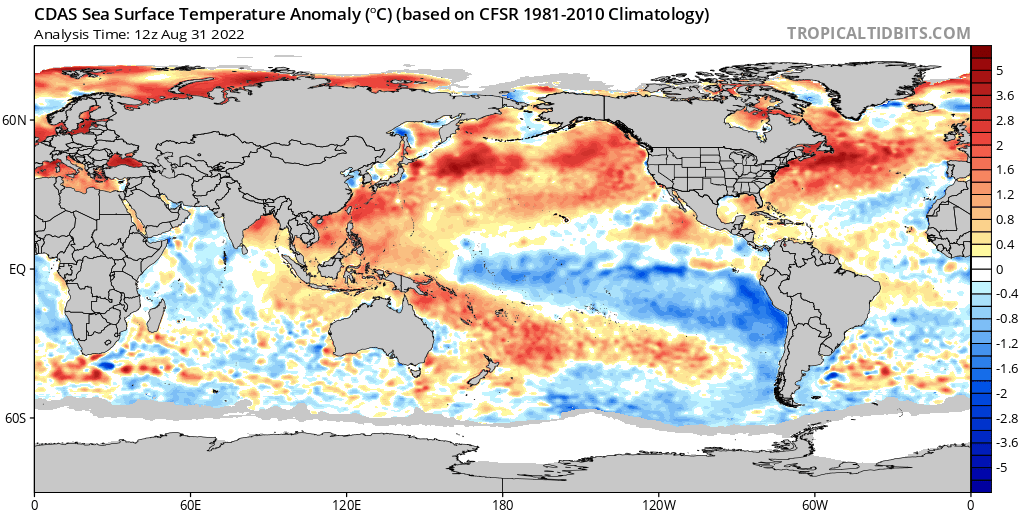
Water temperatures are above average across the entire U.S. coastal area. We also continue to see a healthy, cool La Niña across the equatorial Pacific. These anomalies have not changed much since the beginning of the summer, except that we have seen marked warming along the West Coast. The way that these temperature anomalies have behaved during the summer leads me to believe that they will continue to have a positive effect on temperatures.
Second, I like to look at the strength and stability of the Hudson Bay low or polar vortex at the start of any season:
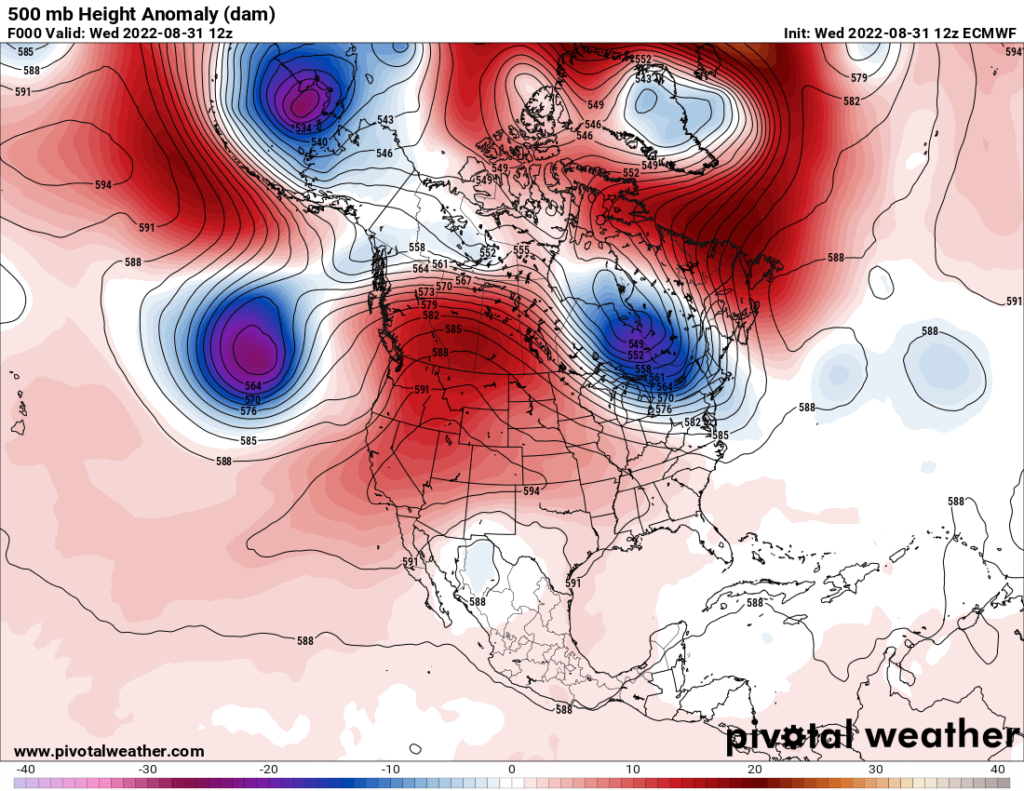
Here we see a healthy Hudson Bay low, but it’s not stable. We could see a dramatic shift in the weather pattern in just ten days:
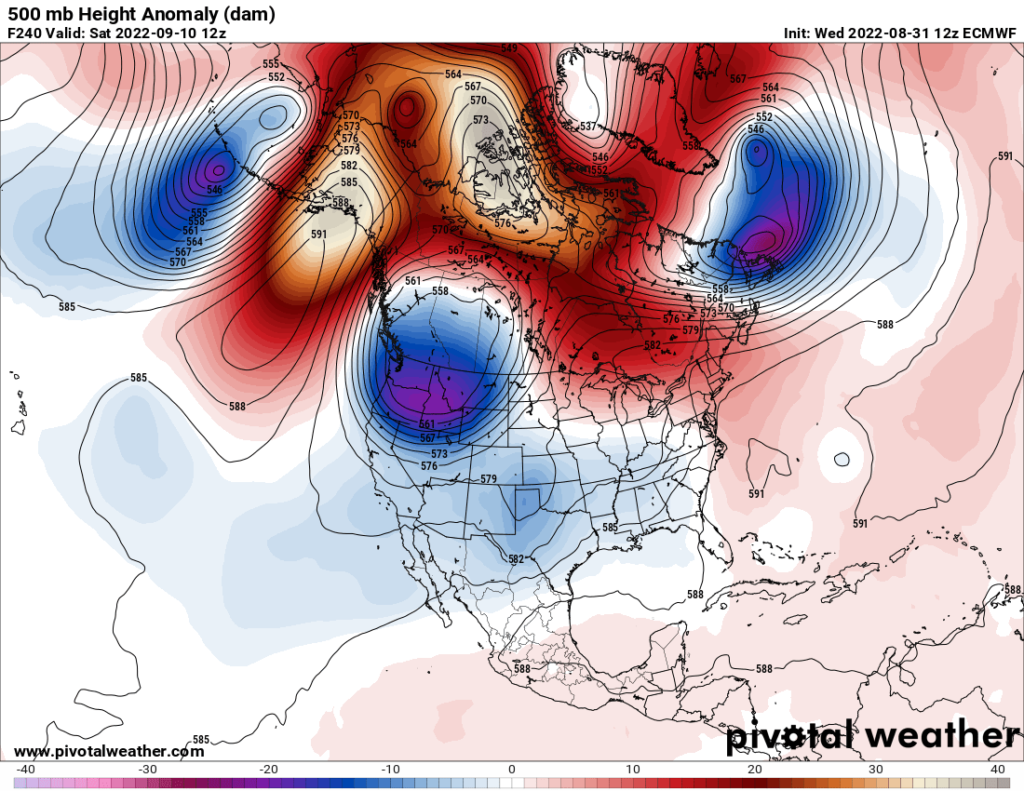
During September we could see a very convoluted jet pattern around North America. This leads me to believe that most of the U.S. will see a hot pattern to start off September, which could dramatically change as we head into mid and latter weeks of the month. Overall, September should be above average simply because of how hot Heatwave Falkor will be to start out the month. Predicting what will happen during October and November is harder than usual due to a very changeable jet stream.
Here is the National Weather Service forecast for Fall 2022:
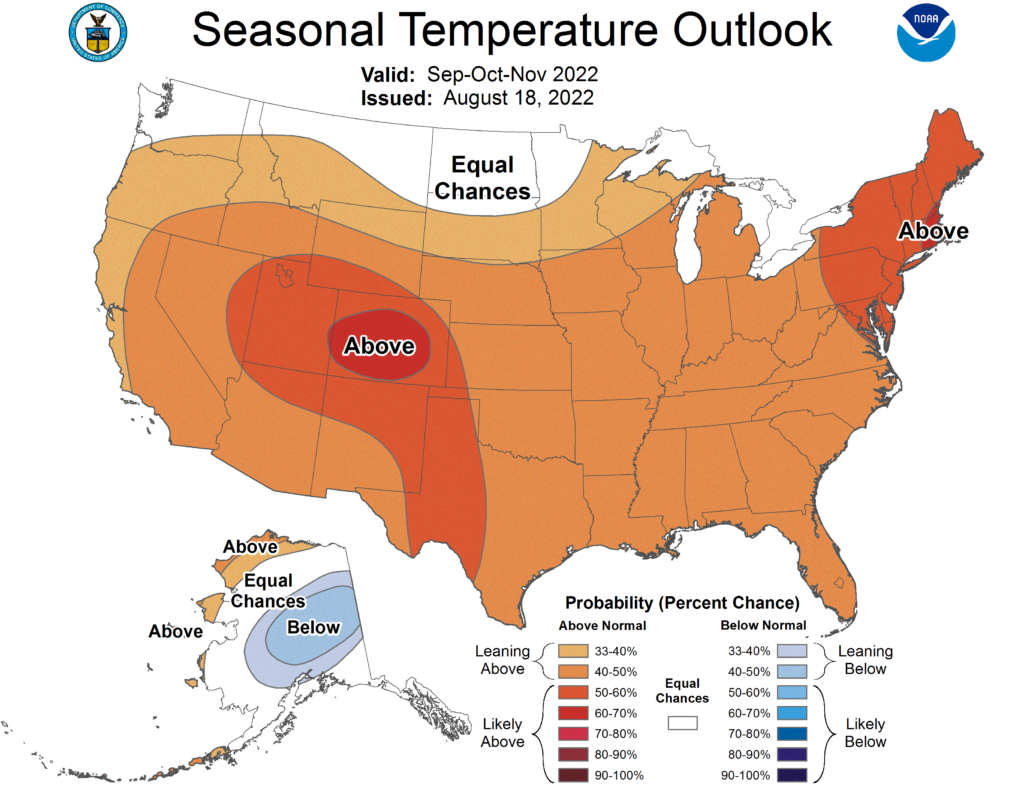
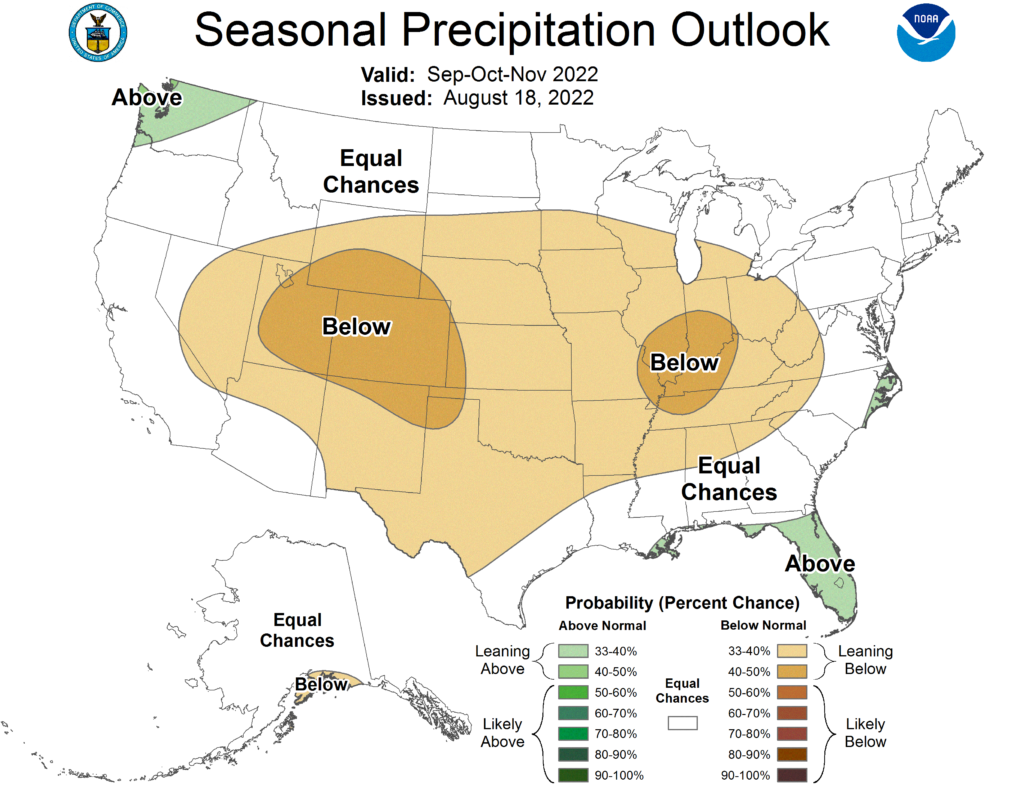
I can’t disagree much with their assessment for this fall, especially after noting what has been happening with coastal temperatures and trends going into September. Another big factor is the ongoing western drought, which unfortunately should raise temperature averages, especially in the West. This is factored into the NWS outlook. I do disagree with their assessment for the Midwest and Northeast. Cool Canadian air masses might penetrate the East should a long wave ridge dipole develop over the West, amplified by the western drought.
Overall, Fall 2022 will probably verify well above average looking at trends from the rest of the planet.
Last, we can get another clue looking at prior National Center for Environmental Information ranking and temperature record count data. For this I like to drag out that “Record Scoreboard” (updated through 8/31/2022):

Temperature averages have been above climatological norms since the beginning of this year, but not as much as in 2020 of 2021. Record totals were on the hot side for Summer 2022. Due to Heatwave Falcor, September’s record totals will probably continue to be warm, making for five months in a row of anomalous warmth. By October or November, we will be due for a cold month, given La Niña, however. It’s cringeworthy to think that once we see another strong El Niño any cool months like April 2022 will be all warm with blue colors disappearing from my charts.
I’m predicting that two out of the three fall months should be above average. The most likely month for below average temperatures would be November looking at record trends. (Here is the link to avg. rankings per year for the lower 48 states since 1895):
https://www.ncdc.noaa.gov/cag/national/rankings
Not all seasons in the near future will see above average temperatures, but seasonal forecasters are beginning to ”chuck it,” discounting colder than average scenarios due to carbon pollution.
Again, here are all seasons ranked for the last decade:

Here is my bottom-line forecast for Fall 2022:
“I think that this fall will be ranked above average. Carbon pollution is definitely making below average seasons rarer. I’m going to forecast that the Fall 2022 ranking will be around 100 + or – 10, with near average confidence given all of the factors on this post.“
My forecast for Spring 2022 of a ranking of 100 was spot on, and we will see how well my forecast ranking of 110 for Summer 2022 verified in a few days.
Notice that the past two falls had a ranking at or above 116. My fall forecast for 2022 is slightly cooler than that of most of the last two falls.
As of 2022 the top ranking for any month or season would be 128 since climatological rankings for the United States started in the year 1895. Carbon pollution is definitely making below average seasons rarer. As stated, I’m going to guess that Fall 2022 gets ranked around 100 + or – 10, and with near average confidence given all of the factors in this post.
We will see how this forecast pans out around December 7th, 2022.
Here are some “ET’s” recorded from around the planet the last couple of days, their consequences, and some extreme temperature outlooks:
Here is some August and Summer 2022 climatology:
Here is more climate and weather news from Wednesday:
(As usual, this will be a fluid post in which more information gets added during the day as it crosses my radar, crediting all who have put it on-line. Items will be archived on this site for posterity. In most instances click on the pictures of each tweet to see each article. The most noteworthy items will be listed first.)
(If you like these posts and my work please contribute via the PayPal widget, which has recently been added to this site. Thanks in advance for any support.)
Guy Walton “The Climate Guy”